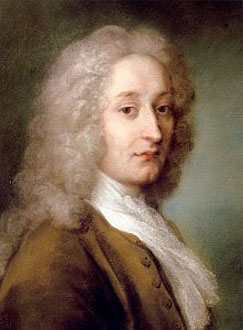
Hiya mates, how’s everything been? What fine weather we’ve been having down under, I hope all is well where you are. So just the other day, a friend of mine from France came to visit. Her name is Kate and she is a rather lovely lady. In any event she is a curator for a local museum and somehow or another we ended up talking about art. Now I know absolutely nothing about art, but she kept talking about an article that she had read recently. Kate persisted that the author had absolutely no idea what he was talking about, so I had to check it out for myself. After reviewing the article, I decided to write my own art analysis. Please check out what I wrote below and as always let me know what you think:
L’Enseigne de Gersaint is without doubt a beautiful portrait as expressed by Kenneth Clark, however the extent to which Clark analyzes the artwork must be challenged. Clark, a renowned art critic states in his book that the painting is reminiscent of the aesthetic movement when critics had previously debated the meaning of the term ‘pure poetry’ and that there is no doubt that the painting has the quality of ‘pure painting’. It is undeniable that the painting is one of high quality, however stating that it is a ‘pure painting’ is a bit drastic, and comparing it to the painting Queen of Sheba is perhaps extravagant.
Before I could properly assess Clark’s claims, I had to find out what exactly what ‘pure poetry’ meant. After conducting a little research I found that ‘pure poetry’ as defined by Google is poetry that is written without a specific message or purpose for the audience and focuses solely on pleasing the reader through the use of imagery or musical flow. With that in mind, pure painting can be defined as painting without a specific message or purpose and focuses on appealing to the audience by way of imagery, which in this particular case would be portrayed by used of color, texture, as well as tone. Now that the definition ‘pure painting’ is somewhat refined, the painting L’Enseigne can be analyzed more effectively.
Upon first glance of L’Enseigne, one would agree that it is quite an extravagant piece of art. The painting successfully depicts a shop in which the nobility have come to purchase various portraits and paintings of scenes. The extraordinary detail in which Wattue put into his work is absolutely phenomenal and almost unbelievable. The meticulous detail of all the portraits looming in the background of the painting is amazing. The texture of the painting is very refined to the extent that just by looking at the picture, one might say that the lady wearing the lavender dress on the right is made of silk. The colors used in the painting are so contrasting that it creates distance within the painting, that wouldn’t necessarily be seen in moderate paintings.
In Clark’s analysis of L’Enseigne he compares it to another painting called the Queen of Sheba. Some may argue that the textures of both paintings are somewhat similar. That may be so, but despite similarities, the colors in Queen Sheba which Clark uses in his comparison are almost non-comparable in that respect. The colors used in the L’Enseigne are subtle yet bold whereas the colors used in the Queen of Sheba are bright, and bold. The colors used in the Queen of Sheba painting provides a wonderful rich texture throughout the painting whereas in L’Enseigne de Gersaint, the texture can only be seen in the lady’s dress on the right, and the lady’s dress on the left. Therefore, L’Enseigne is a far cry from the Queen of Sheba.
Within Clark’s analysis of L’Enseigne he states that it is pure painting. However, it is not indeed a pure painting because there is indeed a meaning behind it. In fact, Clark gives actually contradicts himself and gives the reader the meaning behind the painting. According to Clark, the painting is vindictive of a stage and the portraits are like walls boxing the stage in and the people sitting within the shop are the actors. That alone, is enough to refute Clark’s interpretation of L’Enseigne as a pure painting because it conflicts with the restrictions of a pure painting.
To that end, Clark’s analysis of the L’Enseigne should be viewed somewhat lightly because of his misunderstanding a pure painting and misinterpretations of how the Queen of Sheba and the L’Enseigne are similar in color as well as texture. It is due to these misconceptions that destroy Clark’s credibility as an art critic. But hey, you can be the judge. Below I have provided links to both paintings. Feel free to leave comments! Until next time, that’s all mates!
To veiw Queen Sheba click here: http://www.artchive.com/artchive/P/piero/sheba.jpg.html
SOURCES
No comments:
Post a Comment